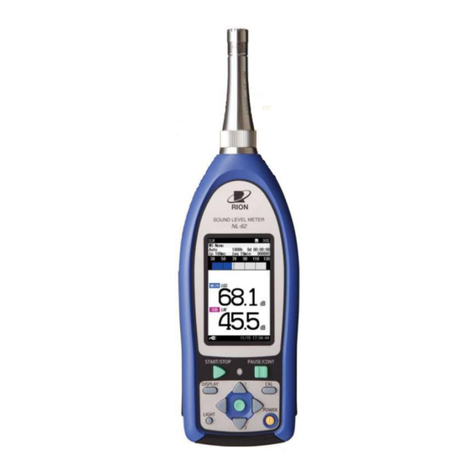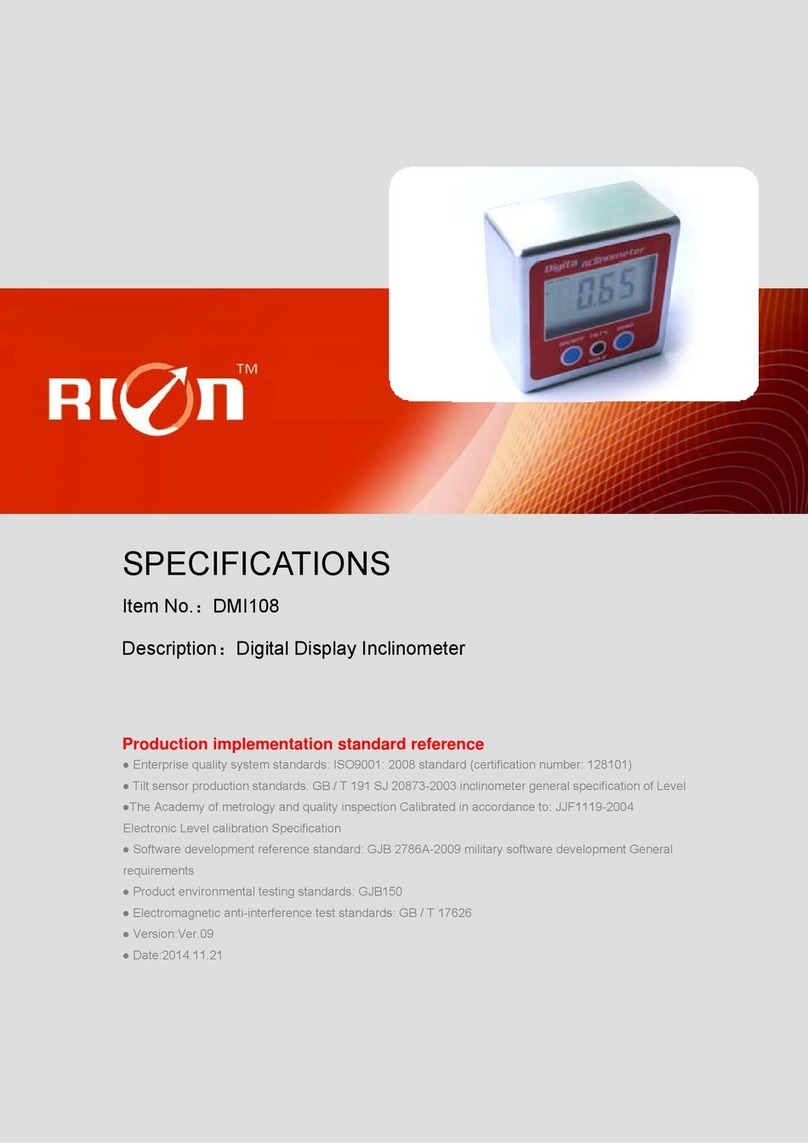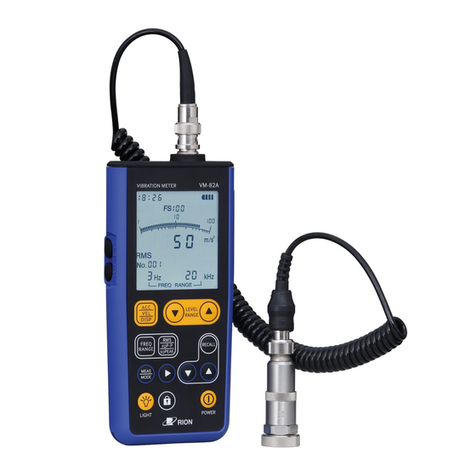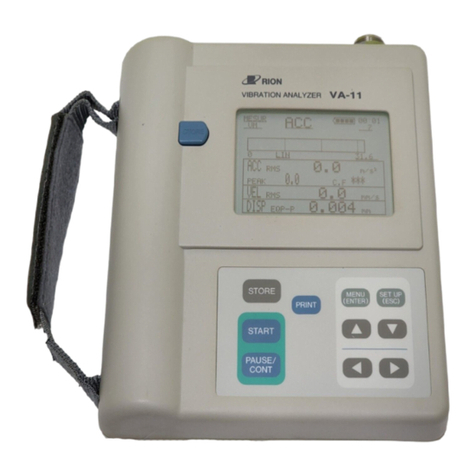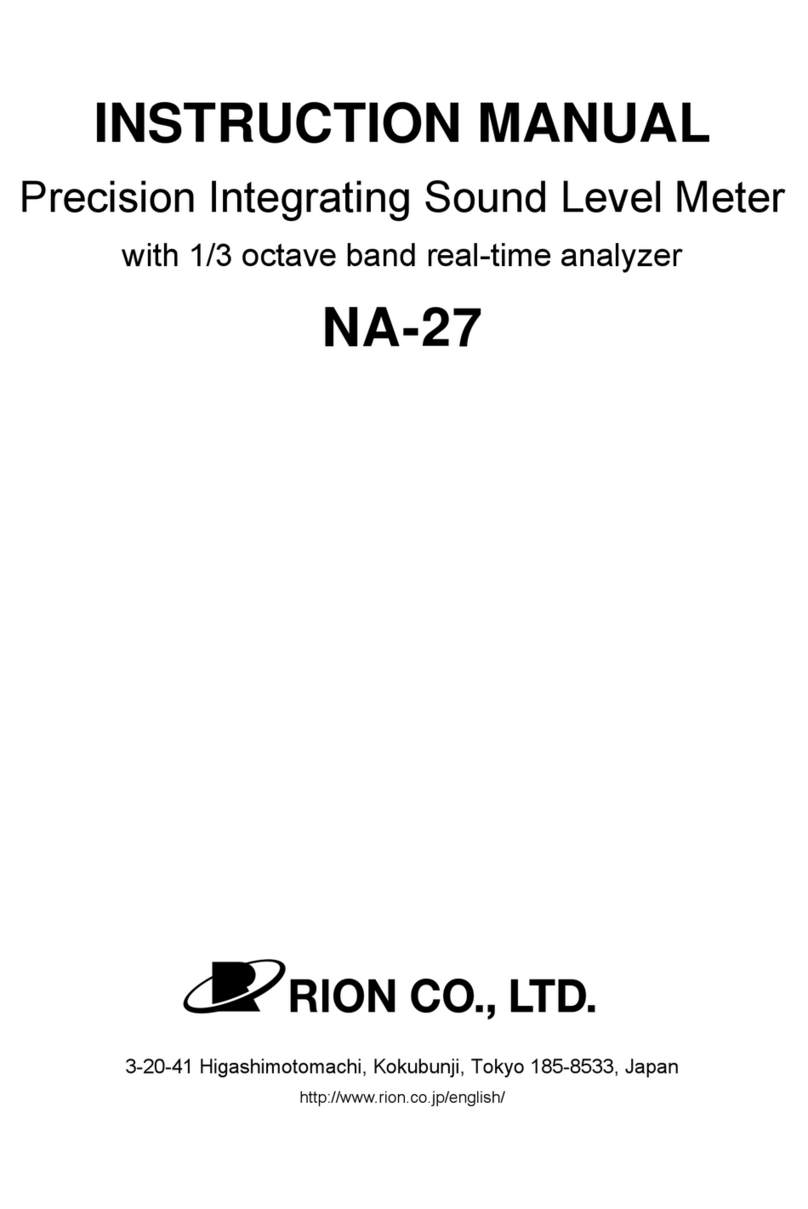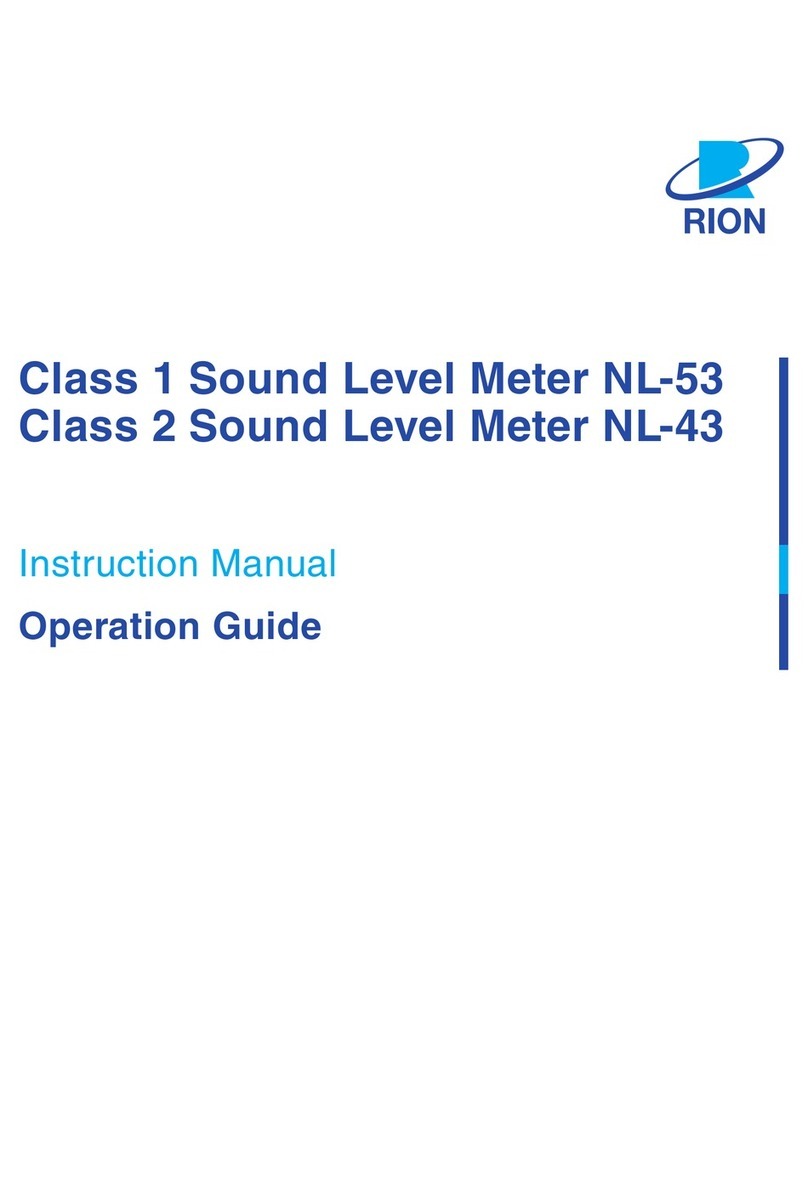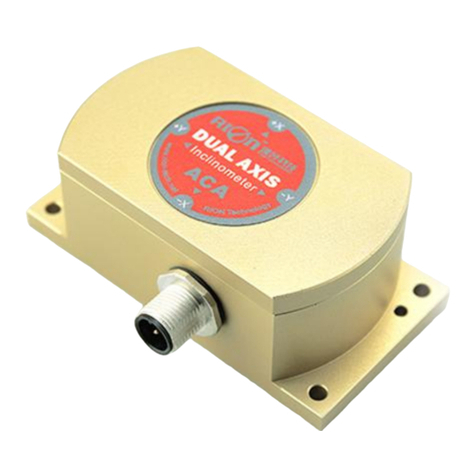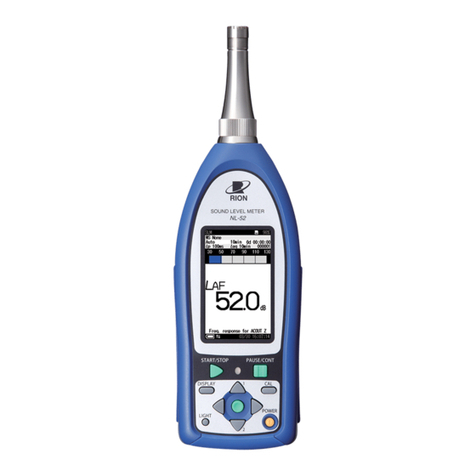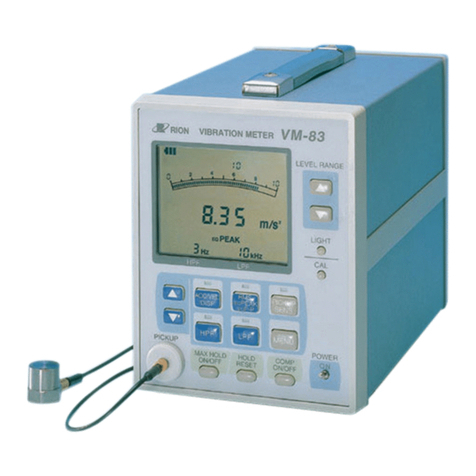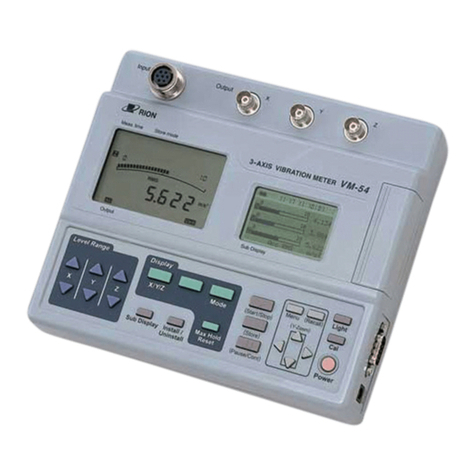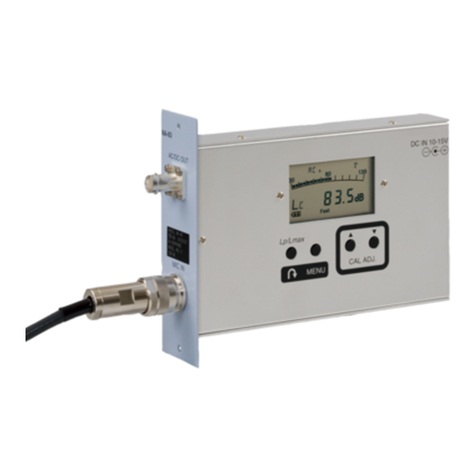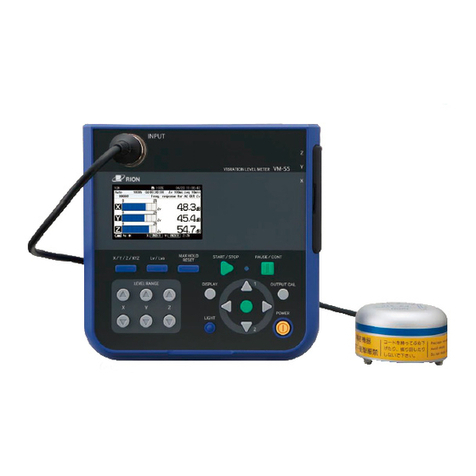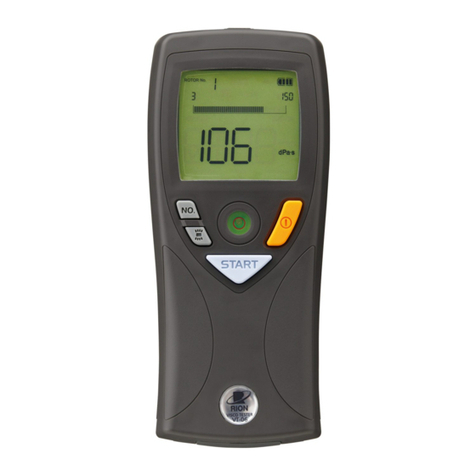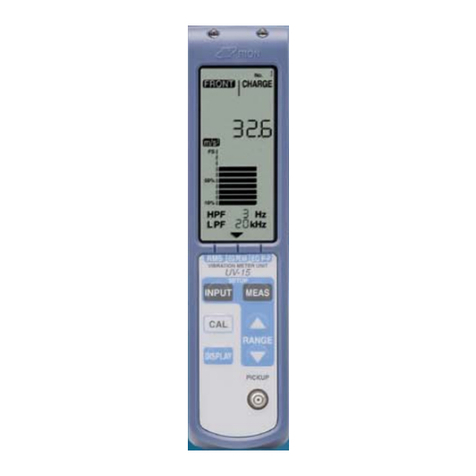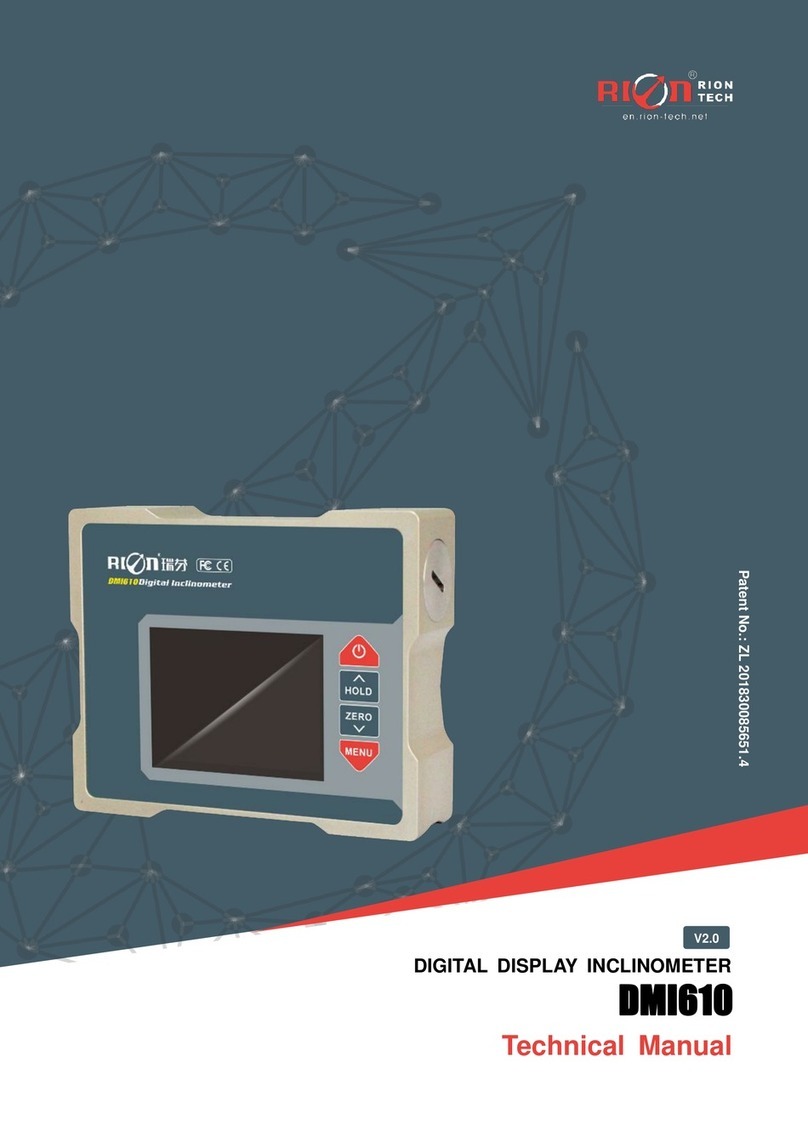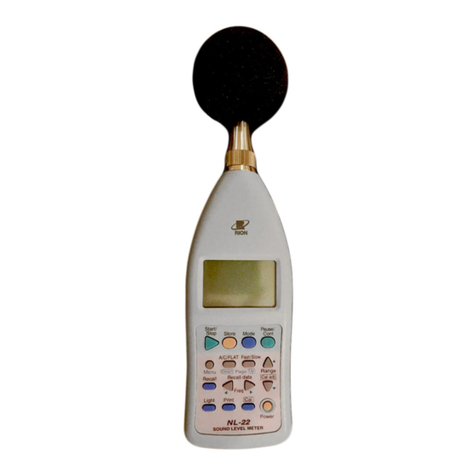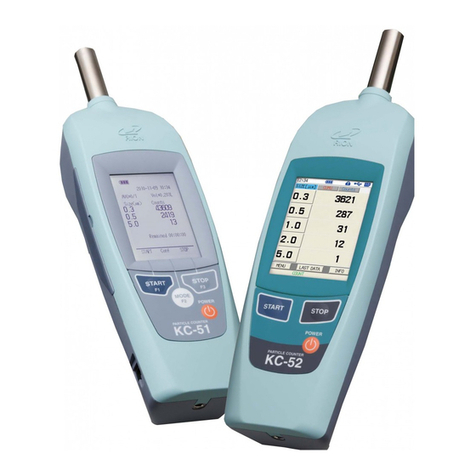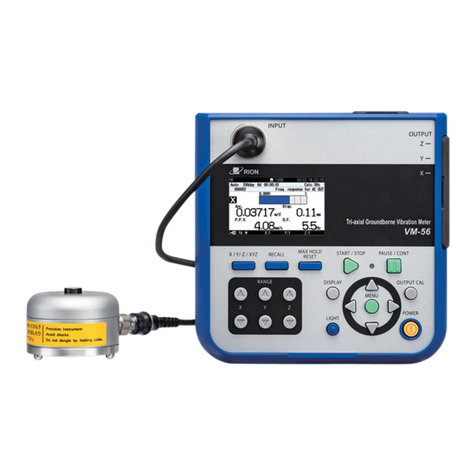
PIEZOELECTRIC ACCELEROMETER
PV-91C
INSTRUCTION MANUAL
Outline
The PV-91C is a compact piezoelectric accelerometer featuring an annular shear mode
element and a CCLD (constant current line drive) type charge amplier. The PV-91C
is allowed acceleration measurements in temperature environments up to 170°C.
The PV-91C has one detection axis perpendicular to the mounting surface. Various
mounting methods are supported, including screw mounting (standard method), adhesive
mounting using the supplied insulation attachment VP-53W, dual-sided adhesive tape,
etc. The supplied cable with 10-32 UNF connectors and ferrite cores VP-51LC is to
be connected to the PV-91C. Also the optional low-noise coaxial cable (heat-resistant)
VP-51LB and accelerometer cable VP-51L are used for connection.
Features
• Connects for use with devices such as a data recorder, analyzer and vibration
meter which has CCLD input.
• Performs vibration measurement in the wider temperature range than the tradi-
tional accelerometer of the CCLD system.
• Because of the compact and lightweight design, there is little accelerometer mass
interference with the object being measured and it can be used for a wide variety
of applications such as vibration measurement and modal analysis of lightweight
structural objects.
Precautions
In order to ensure safety, carefully read and observe the precautions below.
Important
Do not connect the PV-91C to a power supply that is not CCLD
compliant. In particular, connecting the PV-91C to a constant
voltage power supply may cause permanent damage to the unit.
• Take care not to drop the PV-91C, to prevent the risk of damage and performance deg-
radation. If the mounting surface is damaged, frequency response may also suffer.
• Use the PV-91C only within its specied operation temperature range. In particular, protect
the unit from excessively high temperatures. Otherwise, the PV-91C may be damaged.
• The PV-91C is not waterproof. Do not immerse the unit in water or expose it to a
high humidity environment for an extended time. Otherwise water may enter the
unit and performance may be degraded due to reduced grounding.
• Be careful there is no adhesion of dust and dirt to the PV-91C. Clean the PV-91C
only by wiping it with a soft, dry cloth or, when necessary, with a cloth lightly
moistened with water.
• Do not insert any objects such as pins, metal scraps etc. into center contact of the
PV-91C.
• Protect the unit from water, dust and extreme humidity during storage. Also keep
the unit away from air with high salt or sulphur content, gases, and stored chemicals
during storage and use.
• When disconnecting cables, always grasp the plug and do not pull the cable. Do
not apply excessive force.
• Do not try to disassemble or alter the unit.
• When the PV-91C is mounted to a measurement object, the mass of the acceler-
ometer will be added to that of the object, thereby changing its vibration mode.
Provided that the mass of the measurement object is at least 10 times of the ac-
celerometer, the change in resonance frequency will be 5 percent or less and can
therefore largely be disregarded. Since the PV-91C has a mass of 1.8 grams, the
measurement object should have a mass of at least 18 grams.
• In case of a malfunction, checks and servicing contact the supplier.
• When disposing of the PV-91C, please follow the local and national government
regulations and laws.
Accelerometer and measurement unit connection
Use the supplied cable with 10-32 UNF connectors and ferrite cores VP-51LC to
connect the PV-91C to the measurement device. If the measurement device has a
BNC connector, the optional BNC adapter VP-52C can be used. When connect-
ing the VP-51LC to the PV-91C, insert the plug straight and make sure that the
center contact of the VP-51LC is engaged with the corresponding center contact
of the PV-91C connector. Then turn the ring to tighten the connection. If the ring
is tightened while the center contact is not properly inserted or positioned at an
angle, the connector may be damaged.
The center connector of the VP-51LC is enclosed by a silicon pad that serves to
ensure a tight t and prevent wobbling when connected to the PV-91C. In rare cases,
when the unit is exposed to temperatures near the limits for extended periods, the
silicon pad may deteriorate and lose its effect. If this has happened, the pad should
be replaced. Contact the supplier.
When handling the parts, take care not to get the PV-91C or VP-51LC dirty. Otherwise,
contact problems may impair the measurement. If a part has become contaminated,
wipe it with cleaning alcohol or similar and use it only after it has full dried.
Accelerometer cable handling precautions
During a vibration measurement, the supplied cable with 10-32 UNF connectors
and ferrite cores VP-51LC may become deformed or break due to the inuence
of vibrations and resonance. To prevent this, the VP-51LC should be xed to the
measurement object with adhesive tape or similar, at a point as close to the PV-91C
as possible. Also, note that stress which tends to occur at the base of the connector
can cause the cable to break if present for an extended time. Handle the cable with
care and avoid subjecting this section to bending force etc.
PV-91C
VP-51LC
Adhesive tape
Method of mounting to an object to be measured
The standard mounting method using the VP-53K
Installation procedure
1. Drill a hole (M3 P=0.5) into the measurement object for attaching the PV-91C
(effective depth 3.5 to 4 mm).
2.
Insert the M3 screw VP-53K into the PV-91C and use the supplied hex wrench to
lightly tighten it (0.1 to 0.4 N
·
m).
3. Attach the PV-91C to the measurement object.
4. Use the supplied spanner to fasten the PV-91C (fastening torque approx. 0.5
N·m).
5. Connect the supplied cable with 10-32 UNF connectors and ferrite cores VP-
51LC to the accelerometer.
It is important that the PV-91C adheres tightly and hermetically to the measure-
ment object. If the surface to which the accelerometer is mounted is not smooth,
frequency response may be affected. Either select a section that is already at
and smooth, or nish the section to a suitable condition prior to mounting. When
opening a screw mounting hole in the measurement object, the tap must be applied
completely vertically, to ensure a tight t of the accelerometer and prevent impair-
ment of frequency response.
Do not use any other screw except the supplied M3 screw. Otherwise the required
strength and tight t may not be achieved.
The mounting method using the insulation attachment VP-53W
If an electric potential exists between the housing (ground) of the PV-91C and
the measurement object, a current may ow in the ground line, which can lead to
unstable operation and noise. In such a case, use the supplied insulation attachment
VP-53W. The attachment can also be used to attach the PV-91C if there should be
no screw hole in the measurement object.
However, when using the VP-53W, the upper temperature limit for use of the PV-
91C is reduced to 160°C. If used in environment higher than 160°C, the insulating
layer of the VP-53W may develop microscopic cracks.
Installation procedure
1. Attach the VP-53W to the PV-91C and use the supplied spanner to fasten it
(fastening torque approx. 0.5 N·m).
2. Make sure that the surface of the measurement object is clean, to ensure a good
adhesive t. Also clean the mounting surface of the VP-53W.
3. Use a suitable adhesive to glue the VP-53W with PV-91C to the measurement
object. For information on the proper procedure for gluing and detaching, refer
to the instructions of the adhesive in use.
4. After the adhesive has fully set, connect the VP-51LC to the accelerometer.
Do not modify or damage the VP-53W. Otherwise proper isolation may not be
achieved.
PV-91C
Gluing surface
(supplied)
Drill screw hole
M3 P = 0.5 mm
D=3.5to4mm
(supplied)
VP-53K VP-53W
http://www.rion.co.jp/english/
3-20-41 Higashimotomachi, Kokubunji, Tokyo 185-8533, Japan












